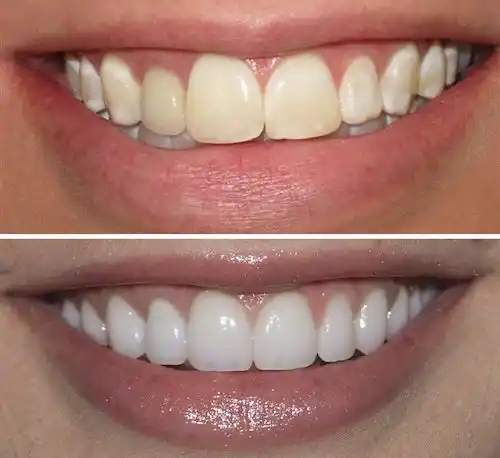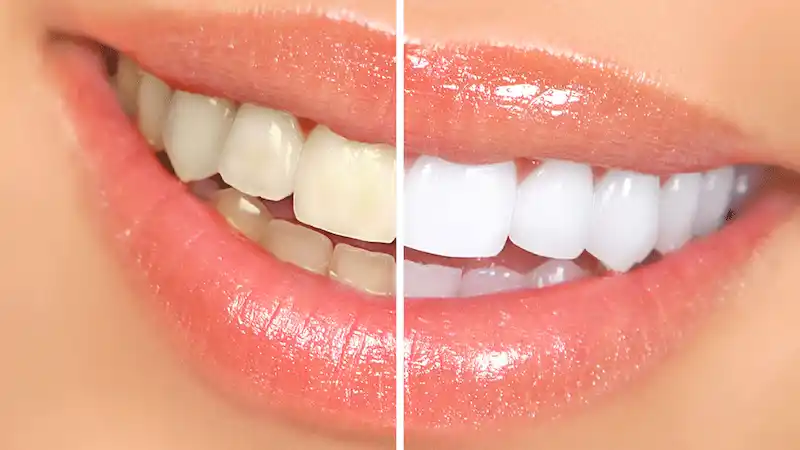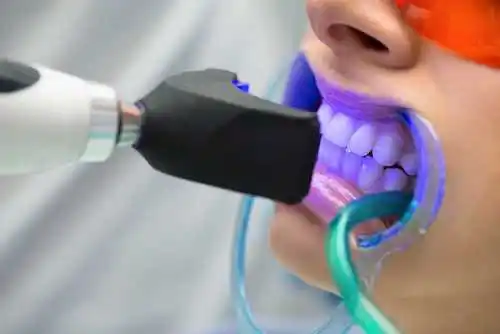A bright, white smile is often associated with good oral hygiene and overall attractiveness. Teeth whitening has become increasingly popular, but have you ever wondered how it actually works? In this article, we will delve into the science behind teeth whitening and explore the various methods used to remove stains and brighten your teeth.
By understanding the mechanisms at play, you can make informed decisions about which teeth whitening options are right for you.
Understanding Tooth Stains
To fully comprehend how teeth whitening works, it’s important to understand the different types of tooth stains. Extrinsic stains occur on the outer surface of the teeth and are typically caused by external factors such as coffee, tea, red wine, or tobacco.
Intrinsic stains, on the other hand, originate from within the tooth and are often a result of aging, certain medications, or excessive fluoride exposure during tooth development.
The Science of Teeth Whitening
Teeth whitening methods primarily target extrinsic stains. They employ various agents and techniques to break down or remove these stains, revealing a brighter, whiter smile. Here are the two primary mechanisms involved:
-
Oxidation
Many teeth whitening products use a process called oxidation to remove stains. Hydrogen peroxide or carbamide peroxide, the active ingredients in whitening agents, break down into oxygen molecules (O2) and water (H2O). The oxygen molecules penetrate the enamel and dentin, reacting with the pigmented compounds that cause the stains. This chemical reaction breaks down the stains into smaller, less visible particles, resulting in a whitening effect.
-
Abrasion
Some whitening toothpaste or treatments contain abrasive particles that physically remove stains from the tooth surface. These abrasives gently scrub away extrinsic stains, helping to restore the natural color of your teeth. However, it’s crucial to use these products responsibly to avoid excessive enamel erosion.
Teeth Whitening Methods
Now that we understand the science behind teeth whitening, let’s explore the different methods commonly used:
-
In-Office Professional Teeth Whitening
This procedure is performed by a dental professional. A highly concentrated whitening gel, typically containing hydrogen peroxide, is applied to the teeth. To enhance the whitening process, a special light or laser may be used to activate the gel. In-office treatments offer quick and noticeable results, usually within a single visit.
-
At-Home Whitening Kits
Over-the-counter teeth whitening kits often contain lower concentrations of whitening agents, such as carbamide peroxide. These kits usually include custom-fitted trays or strips that hold the whitening gel against the teeth. While at-home kits may take longer to achieve desired results, they offer convenience and are generally more affordable than in-office treatments.
-
Whitening Toothpaste
Whitening toothpaste typically contains mild abrasives to help remove surface stains. These toothpaste products are suitable for everyday use, gradually brightening your smile over time. However, they are not as effective against deeper stains.
-
Whitening Strips
Whitening strips are thin, flexible strips coated with a peroxide-based gel. You apply them directly to your teeth and leave them on for a specified amount of time. The peroxide gel works to remove stains and brighten your teeth. Whitening strips are convenient and can provide noticeable results, but they may not be as effective as professional treatments.
-
Tray-Based Whitening Systems
Tray-based systems involve the use of custom-fitted trays filled with a whitening gel. These trays are usually worn for a few hours each day or overnight, depending on the product. The gel gradually whitens the teeth over several weeks.
Considerations and Precautions
While teeth whitening can significantly improve the appearance of your smile, it’s essential to consider a few factors:
-
Tooth Sensitivity
Teeth whitening can cause temporary sensitivity, especially in individuals with already sensitive teeth. Choosing products specifically formulated for sensitive teeth or consulting with a dental professional can help minimize discomfort.
Read more: What are The Causes & Treatment For Sensitive Teeth? -
Enamel Protection
Overuse or misuse of teeth whitening products can potentially damage tooth enamel. It’s crucial to follow instructions carefully and avoid excessive or prolonged use.
-
Treatment Duration and Results
The duration of teeth whitening treatments can vary depending on the method chosen. In-office treatments typically provide faster results, while at-home methods may require several weeks or months to achieve desired outcomes.
Potential problems
While teeth whitening can deliver remarkable results, it’s important to be aware of potential problems that may arise from the process. Here are a few considerations to keep in mind:
-
Tooth Sensitivity
One of the most common side effects of teeth whitening is temporary tooth sensitivity. The peroxide-based whitening agents can irritate the nerves within the teeth, leading to heightened sensitivity to hot or cold temperatures. This sensitivity usually subsides after the treatment is completed, but it’s essential to use desensitizing toothpaste or consult with a dental professional if the discomfort persists.
-
Gum Irritation
Improper use of teeth whitening products can lead to gum irritation. Whitening gels or solutions that come into contact with the gums can cause inflammation, redness, or even chemical burns. It’s crucial to carefully follow the instructions provided and apply the whitening agent only to the teeth, avoiding contact with the gums.
-
Uneven Results
Teeth whitening may not produce uniform results for everyone. Factors such as the initial shade of the teeth, the type of stains present, and the individual’s response to the whitening agents can influence the outcome. In some cases, certain areas of the teeth may whiten more effectively than others, leading to an uneven appearance. Consulting with a dental professional can help ensure a more consistent outcome.
-
Overuse and Enamel Damage
Excessive or prolonged use of teeth whitening products can potentially damage the enamel, the protective outer layer of the teeth. Enamel erosion can lead to tooth sensitivity, increased susceptibility to cavities, and a translucent or yellowish appearance of the teeth. It’s crucial to follow the recommended treatment duration and seek guidance from a dental professional to prevent enamel damage.
-
Unrealistic Expectations
Teeth whitening treatments can significantly improve the color of your teeth, but it’s important to have realistic expectations. The effectiveness of whitening can vary depending on factors such as the severity of the stains, the original color of the teeth, and the chosen whitening method. It’s essential to understand that teeth whitening may not achieve a Hollywood-perfect, ultra-bright white smile, especially if your teeth have deep or intrinsic stains.
By being aware of these potential problems, you can take appropriate precautions and make informed decisions when it comes to teeth whitening. It’s advisable to consult with a dental professional who can assess your oral health, discuss your expectations, and recommend the most suitable whitening approach for you, minimizing the risk of complications and maximizing the effectiveness of the treatment.

Conclusion
Teeth whitening is a popular cosmetic dental procedure that can significantly enhance your smile. Understanding the science behind teeth whitening is crucial in making informed decisions about the best method for you.
Whether you opt for in-office professional treatments or at-home whitening kits, the primary goal remains the same: to remove extrinsic stains and reveal a brighter, whiter smile. Remember to consult with a dental professional to determine the most suitable teeth whitening option based on your oral health and specific needs.





